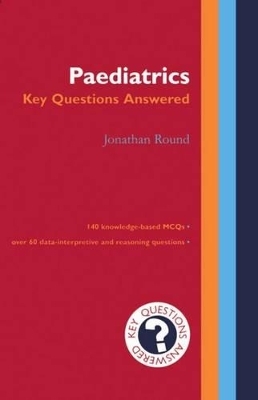
Paediatrics: Key Questions Answered
Seiten
1999
Oxford University Press (Verlag)
978-0-19-262904-3 (ISBN)
Oxford University Press (Verlag)
978-0-19-262904-3 (ISBN)
This text should help the clinical medicine student learn and revise their paediatrics. Designed to be used on its own for revision and additional learning, this book can also be used to complement the "Paediatrics: Understanding Child Health" an Oxford core text).
In our new Key Questions Answered series, Paediatrics KQA has been to help the clinical medicine student learn and revise their paediatrics. Designed to be used on its own for revision and additional learning, this book can also be used to complement the Paediatrics: Understanding Child Health (An Oxford Core Text). Taking an integrative approach, this book covers the undergraduate medical curriculum and the Diploma of Child Health, giving a broad base of questions both knowledge based and data-interpretive and reasoning, and has full answers which contain additional learning points. There are more than 200 key questions testing both knowledge, data interpretation and reasoning skills. It also includes a section on how to approach MCQs: For example; commonly this means something is often encountered or its association is not a surprise. Rarely here the association is well-recognised but uncommon.
In our new Key Questions Answered series, Paediatrics KQA has been to help the clinical medicine student learn and revise their paediatrics. Designed to be used on its own for revision and additional learning, this book can also be used to complement the Paediatrics: Understanding Child Health (An Oxford Core Text). Taking an integrative approach, this book covers the undergraduate medical curriculum and the Diploma of Child Health, giving a broad base of questions both knowledge based and data-interpretive and reasoning, and has full answers which contain additional learning points. There are more than 200 key questions testing both knowledge, data interpretation and reasoning skills. It also includes a section on how to approach MCQs: For example; commonly this means something is often encountered or its association is not a surprise. Rarely here the association is well-recognised but uncommon.
Introduction ; Neonatology ; Cardiovascular ; Respiratory ; Nephrology ; Neurology ; Endocrinology and metabolic diseases ; Haematology and oncology ; Immunology and Infectious diseases ; Rheumatology and Orthopaedics ; Gastroenterology ; Surgery ; Dermatology ; Growth and nutrition ; Community paediatrics and development
| Erscheint lt. Verlag | 21.1.1999 |
|---|---|
| Reihe/Serie | Key Questions Answered |
| Verlagsort | Oxford |
| Sprache | englisch |
| Maße | 139 x 216 mm |
| Gewicht | 399 g |
| Themenwelt | Medizin / Pharmazie ► Gesundheitswesen |
| Medizin / Pharmazie ► Medizinische Fachgebiete ► Pädiatrie | |
| Medizin / Pharmazie ► Pflege ► Kinderkrankenpflege | |
| ISBN-10 | 0-19-262904-2 / 0192629042 |
| ISBN-13 | 978-0-19-262904-3 / 9780192629043 |
| Zustand | Neuware |
| Haben Sie eine Frage zum Produkt? |
Mehr entdecken
aus dem Bereich
aus dem Bereich
Inklusive Neonatologie/ Intensivmedizin
Buch | Softcover (2020)
Urban & Fischer in Elsevier (Verlag)
30,00 €
Grundlagen, Klinik und Praxis
Buch | Hardcover (2023)
Urban & Fischer in Elsevier (Verlag)
129,00 €


